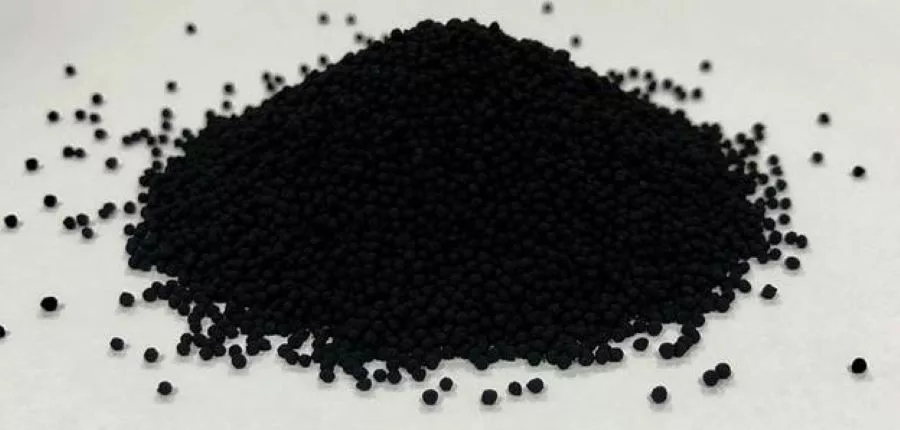The Global Carbon Black Market to Reach $46.9 Billion by 2033

Image courtesy of Fact.MR.
Fact.MR states the global carbon black market size is estimated to be valued at US$ 26.2 billion in 2023 and it is expected to grow at a CAGR of 6.0% to reach US$ 46.9 billion by the end of 2033.
The Gross Value Added (GVA) of the global chemical sector is poised to be significantly influenced by the carbon black market. This influence primarily stems from its versatile application in various products, encompassing paints, coatings, packaging, plastics, and printing inks.
Considering these factors, it is projected that the carbon black market will witness a revenue increase of 1.5 times by the year 2031, amounting to an approximate value of US$ 30 billion at that juncture.
The revenue-generating capacity of the carbon black market was also affected by the COVID-19 pandemic, leading to a year-on-year (Y-o-Y) decline. Nevertheless, the market is expected to stabilize by the end of 2033, with an estimated CAGR of around 6% over the subsequent decade.
Several factors propel the carbon black market, including:
- Tire Reinforcement: Carbon black serves as a reinforcing agent in tire production, imparting strength, durability, and resistance to wear and tear. With the escalating global demand for tires, there is a parallel rise in the demand for carbon black.
- Plastics and Composite Materials: Carbon black functions as a filler and pigment in a variety of plastics and composite materials. As industries like automotive, construction, and packaging exhibit increased demand for these materials, the need for carbon black follows suit.
- Inks and Coatings: Carbon black plays a vital role in the production of inks and coatings, offering color and stability. With mounting demand across various sectors, including packaging, printing, and automotive, the demand for carbon black is on an upward trajectory.
- Automotive Industry: The automotive sector significantly consumes carbon black, employing it in tire manufacturing, as well as in automotive coatings and plastics. The burgeoning global automobile market fuels the demand for carbon black.
- Energy-Efficient Tires: Carbon black contributes to the production of energy-efficient tires, which enhance fuel efficiency and reduce carbon emissions. Given the escalating concerns over climate change and the imperative to mitigate greenhouse gas emissions, the demand for energy-efficient tires is on the rise, consequently boosting the demand for carbon black.
Current trends in the carbon black market encompass:
- Sustainability Initiatives: Manufacturers are exploring sustainable and renewable sources of carbon black, including bio-based and waste-based variants, to mitigate environmental impacts.
- Specialty Carbon Black: Customized specialty carbon black, tailored to specific performance requirements, is gaining traction in various sectors such as automotive, plastics, and coatings.
- Emerging Applications: Carbon black finds new applications in emerging industries, such as electric vehicles, where it contributes to high-performance battery production.
- Digital Integration: Manufacturers are increasingly adopting digital technologies like artificial intelligence and the Internet of Things (IoT) to optimize production processes and enhance product quality.
- R&D Investment: Hefty investments in research and development are being made to develop innovative products and technologies that align with evolving industry needs.
- Circular Economy Models: Many companies are exploring circular economy models, focusing on waste material reuse and recycling to enhance environmental sustainability and resource efficiency.
Challenges in the carbon black market encompass:
- Health and Environmental Concerns: Carbon black is considered a potential health hazard due to its association with respiratory problems and other health issues. Additionally, carbon black production can result in substantial greenhouse gas emissions, contributing to climate change.
- Raw Material Price Volatility: Fluctuations in the prices of raw materials like crude oil and natural gas, used in carbon black production, can pose challenges for manufacturers in terms of production cost planning and budgeting.
- Competition from Alternatives: Carbon black faces growing competition from alternative materials, such as silica and other fillers, which offer similar properties at a lower cost.
- Stringent Regulations: Governments worldwide are enacting stringent regulations on carbon emissions, potentially affecting carbon black production and utilization in various industries.
Competitive Landscape
The carbon black market is characterized by high competition and fragmentation, with numerous global companies operating within it. Competition is driven by factors such as product quality, pricing, innovation, and brand reputation. Notable developments in the market include Birla Carbon's launch of the Birla Carbon Specialty Blacks product line, featuring high-performance specialty carbon blacks for various industrial applications, and Cabot Corporation's introduction of the TransfinityTM series of carbon black products, designed to enhance performance and processing efficiency in the tire and rubber industries.
These insights are based on a report on Carbon Black Market by Fact.MR.
Looking for a reprint of this article?
From high-res PDFs to custom plaques, order your copy today!





